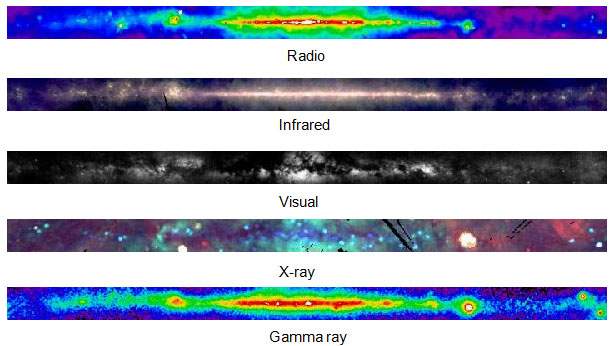
Source: Multi-Wave Milky Way Galaxy, NASA
How do scientists learn about and study the components of the universe? How do we know what the universe is like? How do we know how far objects in space are from Earth? Scientists use telescopes to study the various components of the universe. How do telescopes work? To answer this question, we have to use our knowledge of the electromagnetic spectrum.
A telescope forms enlarged images of distant objects. Telescopes use lenses or mirrors to collect and focus waves from the electromagnetic spectrum, including visible light, allowing us to look at celestial objects.
By studying the electromagnetic waves given off by objects such as stars, galaxies, and black holes, astronomers can better understand the universe. Telescopes are designed to detect a specific portion of the electromagnetic spectrum. According to NASA, "Astronomers therefore often use images from several different telescopes to study celestial objects. The pictures below show the Milky Way Galaxy as seen by radio, infrared, visual (optical), X-ray and gamma ray telescopes."

Source: Multi-Wave Milky Way Galaxy, NASA